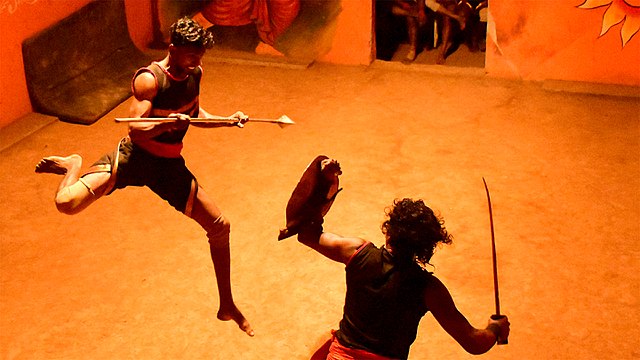What was the First Martial Art in History?
A Fascination Exploration of the First Martial Art in Human Civilization
By Maurice Novoa a master under the Yuen Kay Shan, Ip Man and Pan Nam lineages.
Introduction:
Welcome to our in-depth exploration of Kalaripayattu, the ancient Indian martial art form that epitomizes a harmonious blend of physical prowess, mental acuity, and cultural heritage. In this comprehensive article, we will shed light on the history, techniques, benefits, and cultural significance of Kalaripayattu. Our mission is to showcase the unparalleled richness of this art form and its potential to transform individuals into highly disciplined and skilled practitioners.
A Glimpse into History of this Antient Martial Art
Kalaripayattu traces its origins back over 3,000 years to the southern Indian state of Kerala. Often regarded as one of the oldest fighting systems in existence, Kalaripayattu was initially developed as a means of self-defense and combat training for ancient warriors. Throughout history, this martial art form has evolved and flourished, preserving its traditional techniques while embracing modern innovations.
The Essence of Kalaripayattu
Physical Techniques and Postures
Central to Kalaripayattu are a diverse array of physical techniques and postures known as “Meippayattu.” These encompass a range of defensive and offensive movements, including strikes, kicks, blocks, and grappling techniques. The fluidity and precision of these techniques make Kalaripayattu both an effective martial art and a captivating dance-like performance.
Weaponry Mastery
Kalaripayattu practitioners, known as “Kalari,” are trained in handling various traditional weapons such as swords, daggers, spears, and flexible weapons like the urumi. Weaponry training instills discipline and fosters a deep connection between the practitioner and their chosen weapon, symbolizing the reverence for the art’s historical roots.
Healing and Therapeutic Aspects
Beyond combat skills, Kalaripayattu incorporates a holistic approach to well-being. The practice includes “Marma Chikitsa,” a system of healing that targets vital energy points in the body. By combining therapeutic massages, herbal treatments, and pressure techniques, Kalari healers promote physical and mental balance, aiding both practitioners and those seeking healing.
The Benefits of Kalaripayattu
Physical Fitness and Flexibility
Kalaripayattu’s dynamic movements and intense training contribute to enhanced physical fitness, agility, and flexibility. Regular practice helps improve cardiovascular health, strength, and overall body coordination, making it an excellent choice for individuals seeking a comprehensive workout regimen.
Mental Focus and Discipline
The mental aspect of Kalaripayattu is equally vital. The intricate sequences demand unwavering concentration, fostering mental clarity and mindfulness. The rigorous training instills discipline and cultivates a strong sense of dedication, helping practitioners stay focused not only in their martial arts journey but also in their daily lives.
Cultural and Spiritual Connection
Kalaripayattu is deeply rooted in Indian culture and spirituality. Practitioners engage in rituals and traditional ceremonies that honor their masters and ancestors, forming a spiritual bond with the art. The practice goes beyond physical prowess and serves as a vessel for preserving cultural heritage and ancient wisdom.
Embracing Kalaripayattu in Modern Times
Despite its ancient origins, Kalaripayattu has successfully adapted to contemporary contexts. In recent years, this martial art form has gained international recognition, captivating audiences worldwide with its captivating blend of tradition and innovation.
Conclusion
Kalaripayattu stands as a testament to the timeless brilliance of ancient Indian martial arts, transcending time and borders to inspire modern practitioners around the globe. The harmonious fusion of physicality, mental acuity, and cultural heritage makes Kalaripayattu an art form like no other, capturing the hearts and minds of those who dare to embark on its transformative journey.
As we unraveled the history, techniques, benefits, and cultural significance of Kalaripayattu in this comprehensive article, we have celebrated its enduring legacy as the pinnacle of physical and mental mastery. From its humble beginnings as a means of self-defense for ancient warriors to its profound spiritual and healing aspects, Kalaripayattu continues to captivate with its elegance and sophistication.
Today, as the world becomes more interconnected, Kalaripayattu has found new life beyond its traditional borders. Its adaptation to modern times has only enhanced its allure, captivating audiences and practitioners from diverse backgrounds. As we witness the continued growth of Kalaripayattu’s global presence, we are reminded of its power to unite cultures and bridge gaps, transcending language and barriers to foster appreciation and mutual respect.

